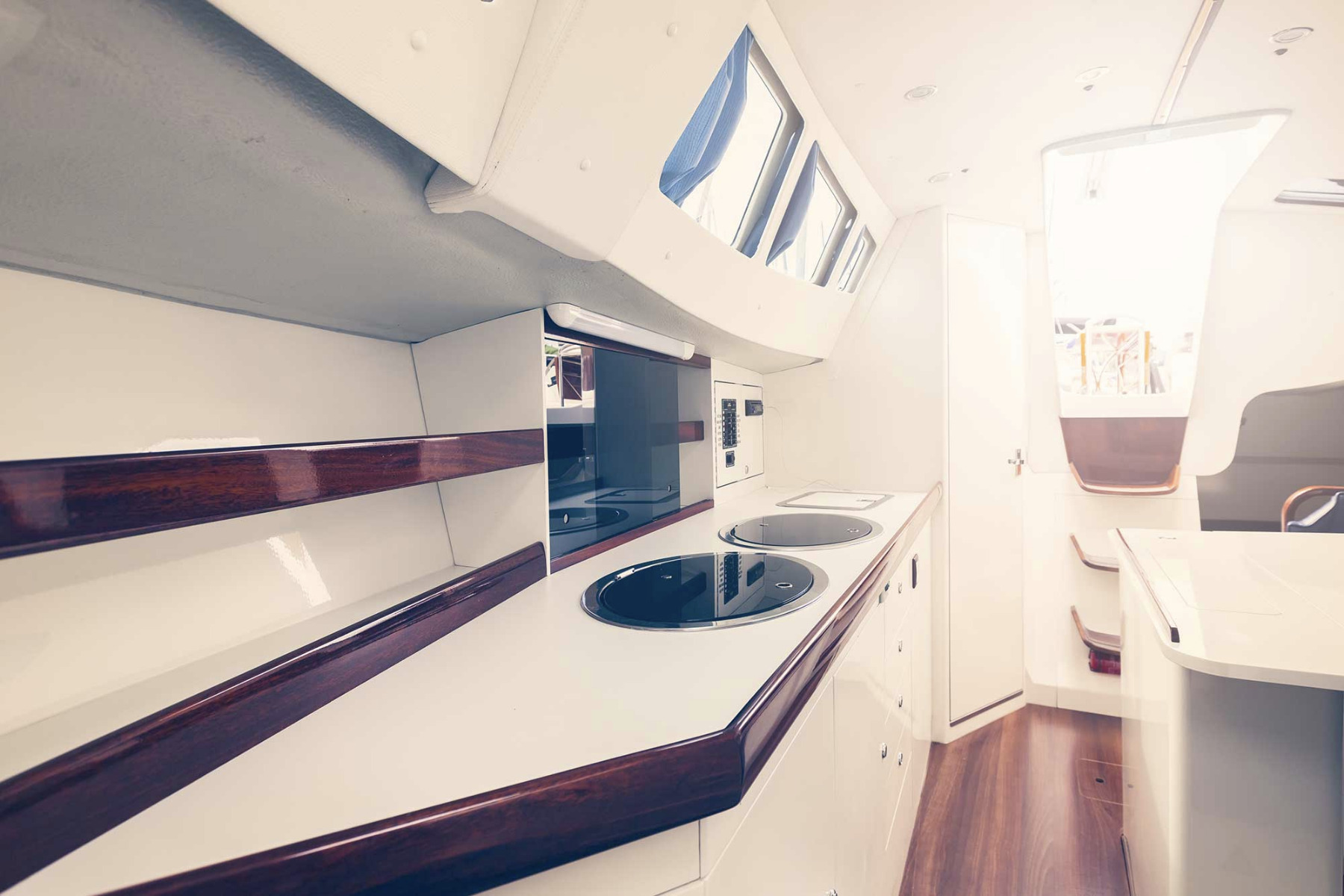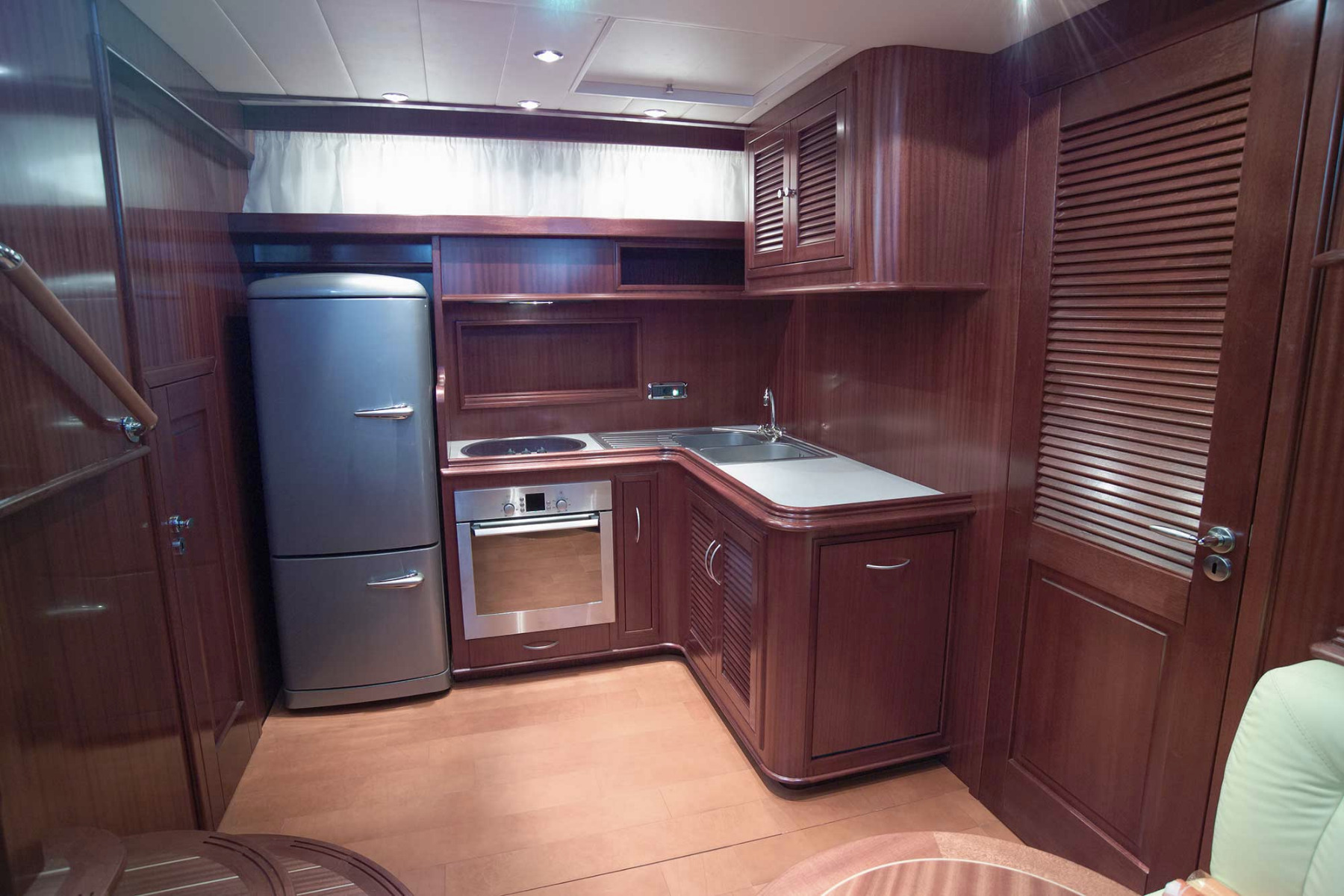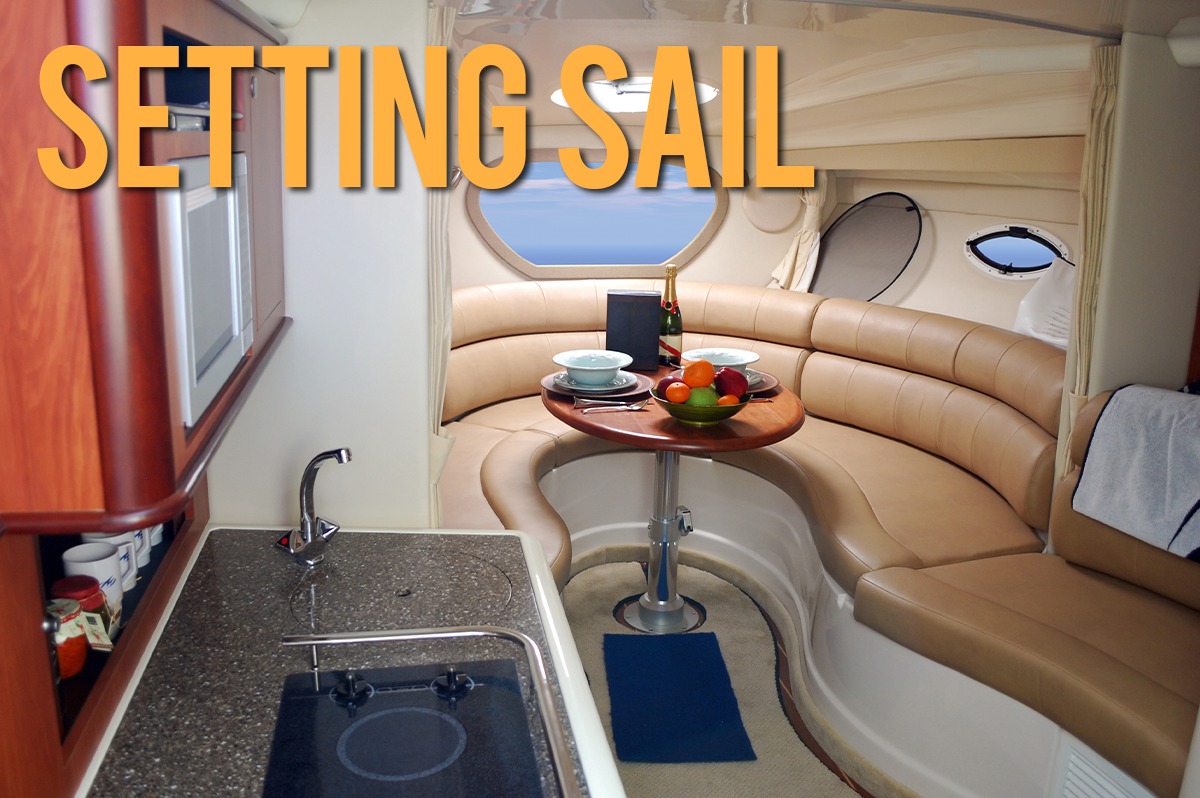Build the Best Cabinets for Your Boat
Mar 30th 2021
If you have a boat and are considering renovating or adding a kitchen, or galley, then you might be wondering where to start. To help you out with this special project, we put together a quick introduction. We will discuss material options, some terms you will need to be familiar with, and some concerns that come with boat cabinets.
As you begin planning your project, be sure to consult a shipwright who can give expert advice on codes and safety. Even if you have experience in construction and cabinetry on land, installing cabinets on a boat comes with unique challenges that make it a completely different undertaking.
Marine Specific Building Materials
When you start browsing materials for your boat cabinets, you will notice a lot of specialized language. Even if you have some knowledge as a builder, the terms used and the concerns for boat cabinets are vastly different. To help out, we put together a quick list of some terms that would be helpful to know as you start your project.
StarBoard:
StarBoard is a popular choice for boat construction as it does not rot, splinter, swell, or delaminate. Also called marine lumber, it is a polyethylene polymer sheet product made specifically for boats. StarBoard can be machined and cut just like wood but is on the more expensive side compared to exterior plywoods. Another important note is that you cannot use glue with this material. All joining must be done with mechanical fasteners or heated welding.

For a look at how Starboard can be handled, check out this DIY guide on using the material!
Marine Plywood:
Like marine lumber, marine plywood is made specifically for boats. It is composed of veneer piles with durable faces covering them. The core and piles are bonded with a special water-resistant glue and will be marked BS 1088. BS 1088 refers to the British standard specification for marine plywood produced using untreated tropical hardwood veneers that are fungal resistant and bonded with Weather Boil-Proof (WBP) glue.
Parts of Marine Plywood:
The “piles” are thin sheets of veneer that are either sliced or rotary peeled from the log. The “core” is the center pile of the sheet. Between the faces, or outside layers, are the crossbands. The “crossbands” are the intermediate piles, which can be laid parallel to the core or perpendicular. If you need to bend the plywood, then parallel piles are preferred, but for a stiffer piece, perpendicular piles are the better choice.
The “faces” refer to the outside layers, and the front face will typically have a better, or more attractive, finish than the back. And finally, “voids” refer to gaps in the piles, which should be avoided as they can lead to issues with water penetration. Voids can also lead to “checks” or “checking” which is when your surfaces split or become cracked.
Special Concerns for Boat Cabinets
The most notable difference, which could go without mentioning, between building at home and on a boat is the water. For boats on saltwater, or in rougher waters, you will have to take extra measures to ensure the longevity of your cabinets. The high levels of moisture and salt in the air can even cause your hardware to rust and corrode. You will need to keep this in mind and select durable metals for your hardware.
Securing Doors and Drawers on Boat Cabinets
In addition to hardware concerns, you will also have to contend with the movement of the boat in the water. To prevent your cabinets from flying open and spilling their contents, you will need latches on all cabinet doors and drawers. Another option for your drawers is to install them to be lifted up and then pulled out.
For your countertops, you should look for designs that feature an upward lip on the edge. This will prevent items from rolling off and can help keep spills on the countertop instead of the floor.
Sizing For Boat Cabinets
In addition to dealing with the environment, another big concern for boat construction is sizing. It can be extremely difficult to find the correct sizes for all the doors, drawers, and cabinet boxes you will need for your project. At CabinetDoorMart, we offer custom sizing for your cabinetry needs. We can construct your cabinet doors to the sixteenth of an inch, so getting the perfect fit will not be an issue. Plus, we have several high-quality wood species available that, when properly sealed, hold up well against moisture.
Other Material for Boat Cabinets

In addition to the marine-specific materials listed above, there are several other seaworthy options for your boat’s cabinets. Marine lumber and plywood can be costly, and it may not fit the aesthetic vision you have for your boat.
Solid Wood
You might be thinking that you cannot use solid wood products, like cabinet doors, on your boat due to the high moisture levels. However, this is only partly true. Woods that are lighter, or have looser grain patterns, should be avoided. The openness of the wood can become inundated with moisture. And so, you should seek out denser woods such as pecan and mahogany. Other options for wood include cherry, maple, and walnut.
However, teak is considered the gold standard for boat construction material. This is because not only is teak an extremely strong material, but it is also highly resistant to moisture, cracking, warping, and decay.
Honeycomb
Honeycomb does not refer to specific materials, but rather the way the material is constructed. As you can imagine, honeycomb refers to sheets of material whose core is not a pile like plywood, but rather is mostly hollow with a honeycomb structure for support. It can be ordered in aluminum, carbon-fiber, and plastics specially engineered to be perfect for the high moisture environment of boats.
What makes honeycomb an even better material for boats is that it is lightweight. When you begin working on your boat, you will need to track how much weight you are adding to it. Making your boat too heavy, or overloading one side, could lead to disastrous effects while you are on the water.
Paints, Top Coats, and Hardware
In addition to selecting the proper materials, you will also need to pick finishes that will hold up to the harsh elements. As you might have guessed, there are products made specifically for this task. Marine paints are highly resistant to water and are easy to keep clean. However, these oil-based products do have a longer drying time than non-oil-based paints. Ensuring the paint, or stain, you select is graded for marine use is important, as using interior paint could lead to your cabinets being ruined by the high levels of moisture.
Top Coats
Regardless of the paint or stain you select, you will need to apply a seal to the surface. The top coat, or a clear coat, acts as another protective for your boat’s cabinets and helps prevent warping and water damage. This final step is vital, and so it is important not to skip.
Hardware
In terms of hardware, your biggest concerns will be rust and corrosion. To avoid these issues, you will need to select materials that are resistant to these natural processes. Chrome-plated zinc and stainless steel are good choices for this job, as they are resistant to the rust that plagues other metals.
Final Thoughts

From rust-resistant metals to water-repellent paints, there are lots of considerations that go with building or renovating boat cabinets. However, one of the biggest obstacles you may encounter has less to do with material and more to do with dimensions. Don’t forget that at CabinetDoorMart we can help you get past this issue with custom sizes for your cabinetry.
If you are looking for more guidelines for this project, check out The American Boat and Yacht Council’s standards for boat construction.
So, if you are getting ready to order, or if you have more questions, please feel free to give us a call at 1-844-326-6680 or an email to info@cabinetdoormart.com.

